Want to know how your brain waves affect your daily life and more importantly, how you can use them to help your meditation? Brain waves play a big part in how we experience the world, from everyday tasks to creativity and meditative states. Each type of brain wave has its own rhythm and shape, reflecting different mental activities. From deep sleep to focused work, each pattern tells a story. By understanding the main types of brain waves and their effects, you can tune into your own energy and support your self-improvement journey – whether you’re meditating, creating, or simply trying to unwind.

Understanding the basics of brain waves
Brain waves are electrical impulses in the brain, measured in hertz (Hz), which reflect the activity of large groups of neurons firing together. These rhythms can be observed using equipment such as an electroencephalogram (EEG), a method developed in the 1920s and still used today. Each type of brain wave corresponds with a range of frequencies and is linked to specific states of consciousness and actions (Verywell Mind).
There are five main types of brain waves: delta, theta, alpha, beta, and gamma. Each plays a unique role, and learning about their actions can help those of us interested in self-discovery and spiritual development understand why meditation and mindfulness often feel so transformative.
Research suggests that rhythms in the brain organise information flow and can sync up different parts of the brain (Sainsbury Wellcome). This natural foundation is why brain waves attract attention from both scientists and spiritual seekers.
The five main types of brain waves
Delta waves (0.5–4 Hz):
The slowest of all brain waves, delta waves show up during the deepest phase of dreamless sleep or very deep meditation. They are linked to healing and regeneration of both mind and body.
Theta waves (4–8 Hz):
Often associated with creativity, intuition, and daydreaming. Theta waves appear during deep relaxation, early sleep stages, or meditation. Many people report vivid visualisations and bursts of insight in this state. Theta is also connected to memory and learning.
Alpha waves (8–13 Hz):
Alpha waves appear when we’re calm but awake – often with our eyes closed or in light meditation. They represent a relaxed, alert state. Increased alpha activity is linked with reduced anxiety and improved wellbeing. I often experience this when writing or spending time in nature.
Beta waves (13–30 Hz):
These are the fast, active waves of our day-to-day life. Beta waves dominate during problem-solving, decision-making, or focused conversations. While useful for getting things done, spending too long in high-beta states can lead to stress or mental fatigue.
Gamma waves (30–100 Hz):
The fastest brain waves, associated with learning, deep focus, and states of heightened consciousness. Studies have shown that advanced meditators – including Buddhist monks – generate more gamma activity during deep meditation.
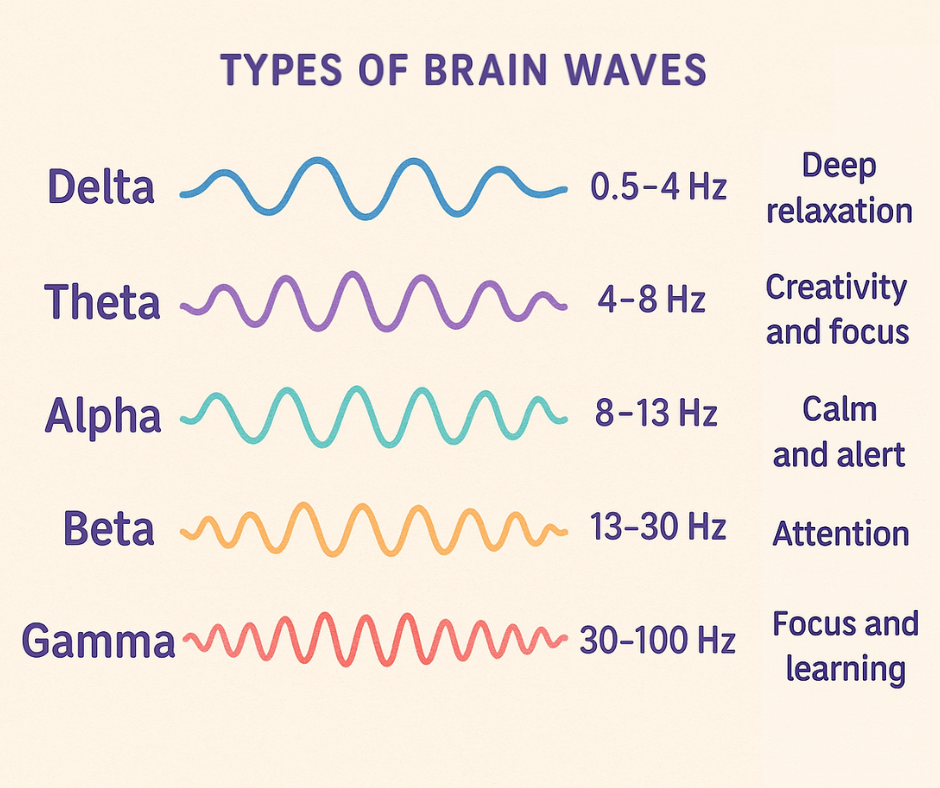
Brain waves in spiritual practice
Brain waves often come up in spiritual discussions because certain frequencies support deeper states of awareness. Theta and gamma waves, for example, have been observed during prayer, chanting, or profound meditative experiences.
Alpha waves are often seen as a marker of peaceful awareness – a state many seek during retreats or mindfulness practice. Group meditations often show a synchronising effect, where people feel more connected to one another, possibly due to shared alpha or theta frequencies.
Research is increasingly showing that regular meditation can alter how the brain produces these waves, supporting long-term changes in emotional regulation and mental clarity.
How brain wave training works
Biofeedback and neurofeedback devices are becoming more accessible for people who want to train their brain to reach certain frequencies. These tools offer real-time feedback, showing how quickly we can enter states like alpha or theta.
Early studies suggest biofeedback can help with:
- Reducing anxiety
- Managing ADHD
- Enhancing creativity
However, more research is still needed to understand the long-term benefits.
Using brain wave knowledge to support meditation
Understanding how brain waves work can empower your meditation practice in surprisingly helpful ways. Instead of trying to force a peaceful state, you can learn to tune in to your brain’s natural rhythms and gently guide yourself into deeper awareness.
Here are a few simple ways to work with your brain waves during meditation:
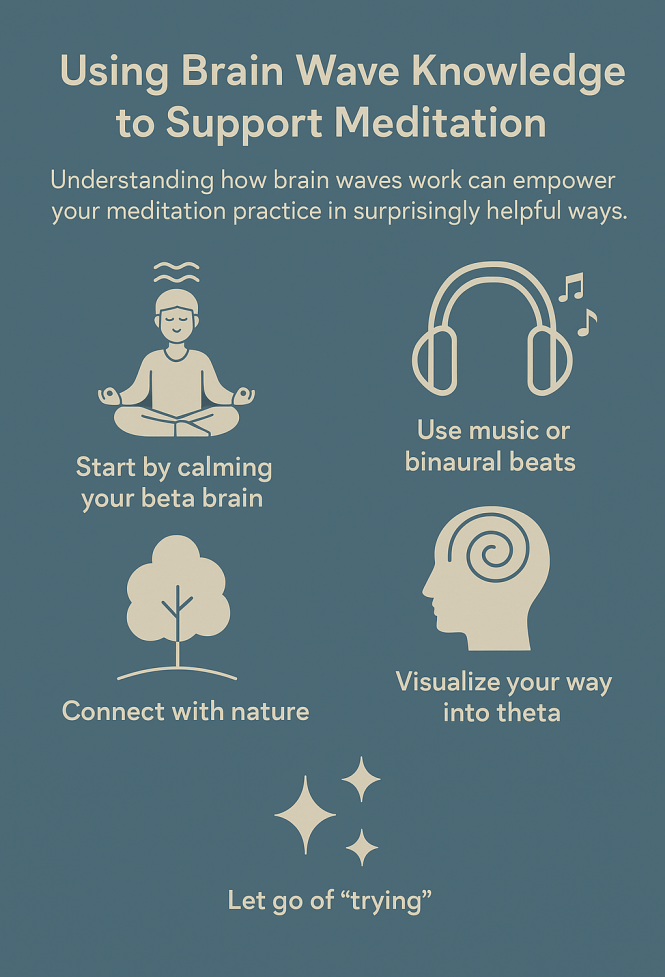
Start by calming your beta brain
Most of us spend our day in high-beta mode – busy, alert, sometimes stressed. To begin your meditation, take a few deep breaths, gently close your eyes, and let your body settle. Even two minutes of stillness can begin the shift into alpha waves.
Use music or binaural beats
Certain sound frequencies can encourage specific brain waves. For example, tracks designed for alpha or theta waves may help you drop into a meditative state more easily. You don’t need expensive equipment – a quiet space and a good pair of headphones can do the trick.
Connect with nature
Being in a natural environment is proven to increase alpha activity. If possible, try meditating outdoors or imagining a calming natural setting in your mind’s eye. Let the imagery guide your brain into a slower rhythm.
Visualise your way into theta
Visualisation is a great way to engage your creative mind and enter the theta range. You might imagine a soft glowing light, a peaceful scene, or even energy flowing through your body. These images activate the intuitive part of your brain and can deepen your meditation.
Let go of ‘trying’
The more you try to enter a specific brain state, the more elusive it becomes. Trust that your brain already knows how to move between these rhythms. Your role is simply to create the conditions for it to happen – stillness, breath, and presence.
With regular practice, you may begin to notice subtle shifts. Your thoughts may slow down. Your inner world may feel more vivid. And your connection to yourself – and perhaps something greater – may deepen.

References and further reading
- Neurolaunch – rhythms of the brain – https://neurolaunch.com/rhythms-of-the-brain/
- https://yourbrain.health/brainwaves-what-they-are/
- Science Direct – Brain Waves – https://www.sciencedirect.com/topics/agricultural-and-biological-sciences/brain-waves
- https://drtrishleigh.com/what-are-brain-waves-and-how-does-our-brain-work/
- Making sense of rhythms in the brain | Sainsbury Wellcome Centre
- 7 Benefits of Alpha-Theta Neurofeedback Brainwave Training
- Frontiers | Neurofeedback Learning Is Skill Acquisition but Does Not Guarantee Treatment Benefit: Continuous-Time Analysis of Learning-Curves From a Clinical Trial for ADHD
- Integrating Technology in Clinical Psychology: An Introduction to Biofeedback and Neurofeedback in Community-Based Practices | SpringerLink
- Exploring Brain Science The Alpha and Theta Waves
- Neurobiological Changes Induced by Mindfulness and Meditation: A Systematic Review
Related posts
Beginner’s guide to meditation and its benefits
Ready, steady, go slow: Meditation and the Law of Attraction
Starting breathwork: Learn to breathe again
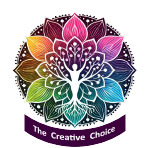
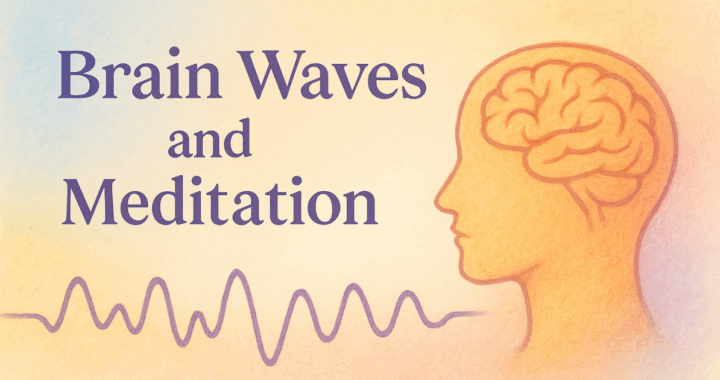
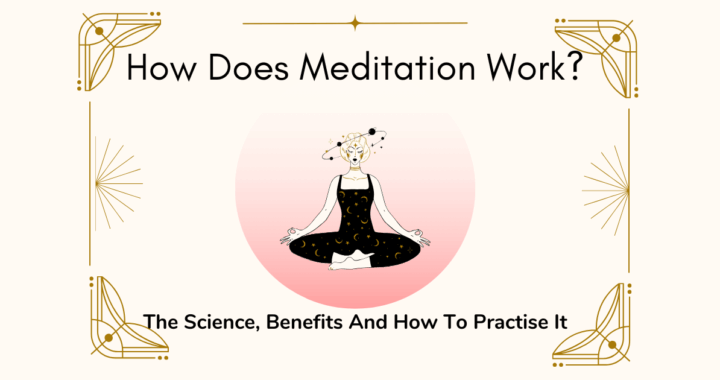


Loved this one – especially how it reframed brain waves not as rigid science, but as a tool for self-awareness. I’ve definitely felt that “alpha glow” after sitting by trees or journaling. Curious though: have you tried biofeedback yourself? Wondering if it’s worth exploring or if natural rhythms + consistency is already powerful enough.
Hi Genie. Thanks for taking the time to read the post and I’m so glad you enjoyed it. I’m pleased you’ve discovered that ‘after glow’ as you say. I have too. Nature has an incredible way of resetting us.
And yes, I really wanted to show that brain waves aren’t just for lab coats and textbooks – they’re part of our lived experience.
As for biofeedback – I haven’t tried it personally being connected to an EEG (yet!), but it does fascinate me and I think I do it organically in a funny kind of way when I meditate as I am mostly aware of the consciousness state that I’m in. I think it can be a helpful tool for some, especially if you’re someone who likes tangible data. But honestly, I think tuning into your body, keeping up a daily practice, and working with your own rhythms can be just as powerful – and often easier to achieve when you don’t have an EEG machine to hand!!
Thanks so much for sharing your thoughts – I love hearing how others experience this too
(And you’ve got me thinking about adding a section on biofeedback in a future post!)
This is a clear and informative guide on brain waves and their effects. I appreciate how it explains Delta, Theta, Alpha, Beta, and Gamma waves in a way that’s easy to grasp. The connection between brain waves and mental states like sleep, relaxation, focus, and creativity is especially useful. It would be great to see tips on how to consciously influence these waves through practices like meditation or breathwork to boost well-being. Thanks for sharing this valuable info!
Hi Kiersti. Thank you for your kind comments and for taking the time to read the post and respond to it. I practice my meditation at least once, if not twice a day and I find that meditating first thing in the morning, just after I’ve woken up, is a great time to catch some of those alpha brain waves that can link to the subconscious As Joe Dispenza says, it’s a “magic key” to the subconscious.